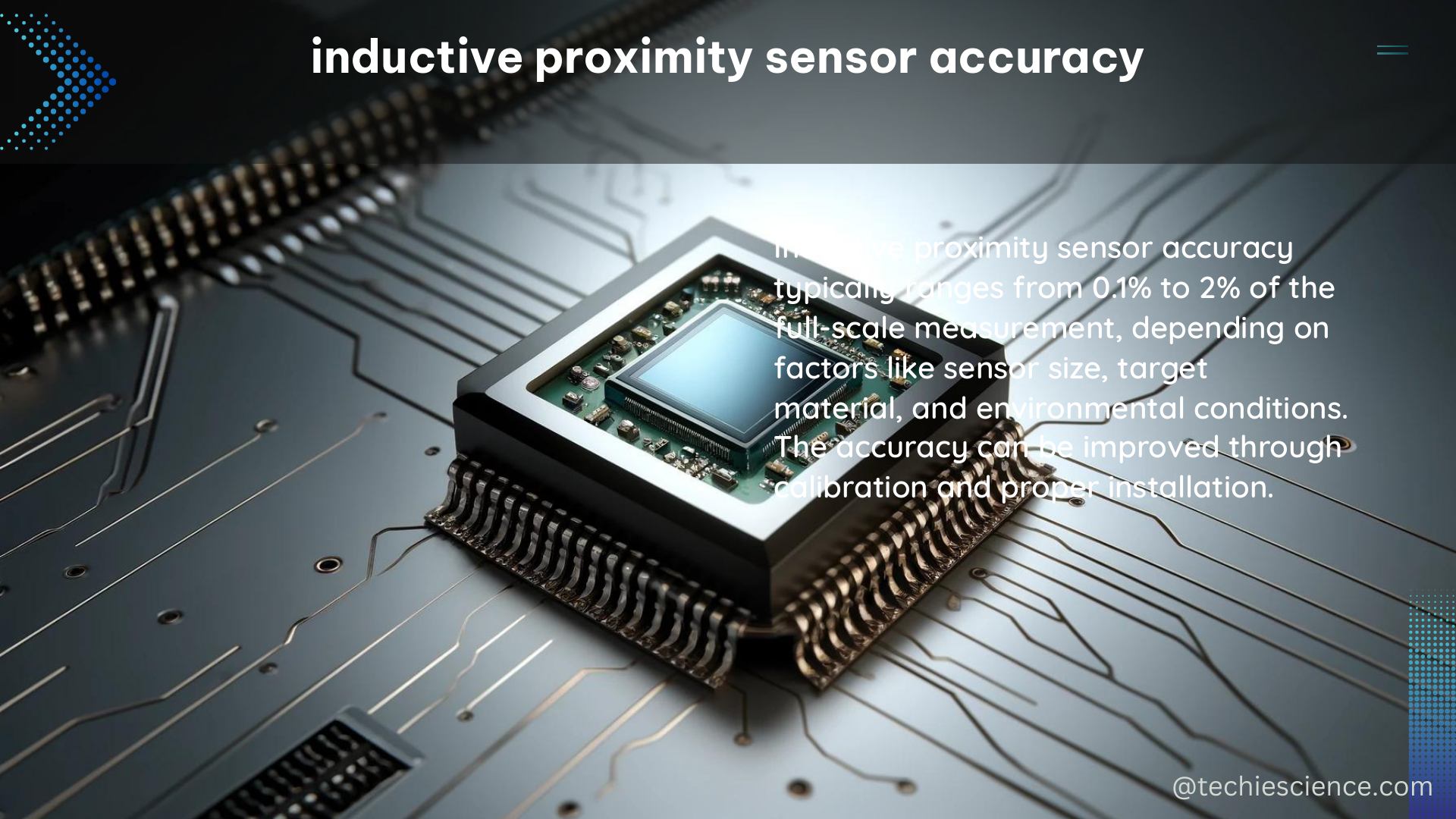Inductive proximity sensors (IPSs) are widely used in position detection due to their unique advantages such as resistance to fouling and abrasion, water tightness, long service life, low mechanical system maintenance cost, high mean time between failure (MTBF) value, and strong magnetic immunity. The accuracy of IPSs is a critical factor in their performance, and it can be affected by various factors such as temperature drift, coil structure, and materials.
Understanding Temperature Drift and Its Impact on Accuracy
One of the primary factors affecting the accuracy of inductive proximity sensors is temperature drift. As the ambient temperature changes, the sensor’s inductance and resistance components can fluctuate, leading to inaccurate measurements. To address this issue, researchers have proposed an analog-digital mixed measurement method based on a two-dimensional look-up table.
- Two-Dimensional Look-Up Table: This method separates the inductance and resistance components by processing the measurement data, reducing temperature drift and generating quantitative outputs. The two-dimensional look-up table is established and implemented through structural modeling and operating principle analysis, and it is effectively compressed by considering the distribution characteristics of the sample data, simplifying the processing circuit and reducing power consumption.
- Real-Time Built-In Self-Test (BIST): A real-time BIST function is also designed and achieved by analyzing abnormal sample data, allowing for the detection and correction of temperature-related errors in real-time.
Coil Structure and Processing Circuit Optimization

The performance of an IPS also depends on the coil structure and the processing circuit. In certain conditions, the greater the inductance component, the better the IPS sensitivity will be. However, the temperature drift will be severe as the resistance component increases simultaneously, and modeling calculation will be complicated by the simultaneous increase in distributed capacitance.
- Inductance vs. Resistance: The sensor signal processing circuit is crucial to the IPS performance, and many methods have been developed to reduce temperature drift by improving the processing circuit, including the analog and digital measurement methods.
- Analog Measurement: Analog measurement procedures include applying pulse excitation to a sensor coil, comparing the thresholds of the r– L discharge waveform via a comparator to determine the inductance value, and evaluating if a target is approaching. This method is simple and popular, but due to the influence of temperature drift, a quantitative output is not always accurate.
- Digital Measurement: Digital measurement methods, on the other hand, can provide more accurate and quantitative outputs by separating the inductance and resistance components and applying temperature compensation algorithms.
Inductive Proximity Sensors in Aviation Applications
The inductive proximity sensor (IPS) is particularly applicable to displacement measurements in the aviation field due to its non-mechanical contact, safety, durability, reliability, and strong environmental suitability. The demands for target location monitoring of transmission parts are increasing gradually with the development of aircraft toward larger size and more automation.
- Environmental Challenges: Monitoring points at the external side of aircraft are situated in severe environments, such as dusty environments, oily environments, spraying environments, freezing environments, acoustic optical disturbances, and low-temperature environments in cruising. Thus, high requirements on the environmental adaptation of IPS are proposed in aviation.
- Temperature Range: The ambient temperature range for displacement detection in aviation is −55 °C–125 °C, which is a significant challenge for maintaining sensor accuracy.
- Measurement Accuracy: The relative position changes between the sensing coil and target, which are detected by the IPS, can be angular or straight variation. The detection range of angular variation is generally 0–30°, which generally requires a measurement accuracy of 0.2–0.5°. Meanwhile, the detection range of straight variation is generally 1–5 mm, which generally requires a measurement accuracy of 0.2–1.0 mm.
Conclusion
In summary, the accuracy of inductive proximity sensors is a critical factor in their performance, and it can be affected by various factors such as temperature drift, coil structure, and materials. To address the problem of temperature drift, an analog-digital mixed measurement method based on a two-dimensional look-up table has been proposed, which separates the inductance and resistance components by processing the measurement data, reducing temperature drift and generating quantitative outputs. The performance of IPS also depends on the coil structure and the processing circuit, and many methods have been developed to reduce temperature drift by improving the processing circuit, including the analog and digital measurement methods.
References:
– A low-cost inductive proximity sensor for industrial applications
– Inductive Proximity Sensor for Displacement Measurement in Aviation
– Temperature Drift Compensation of Inductive Proximity Sensor Based on Analog-Digital Mixed Measurement

The lambdageeks.com Core SME Team is a group of experienced subject matter experts from diverse scientific and technical fields including Physics, Chemistry, Technology,Electronics & Electrical Engineering, Automotive, Mechanical Engineering. Our team collaborates to create high-quality, well-researched articles on a wide range of science and technology topics for the lambdageeks.com website.
All Our Senior SME are having more than 7 Years of experience in the respective fields . They are either Working Industry Professionals or assocaited With different Universities. Refer Our Authors Page to get to know About our Core SMEs.